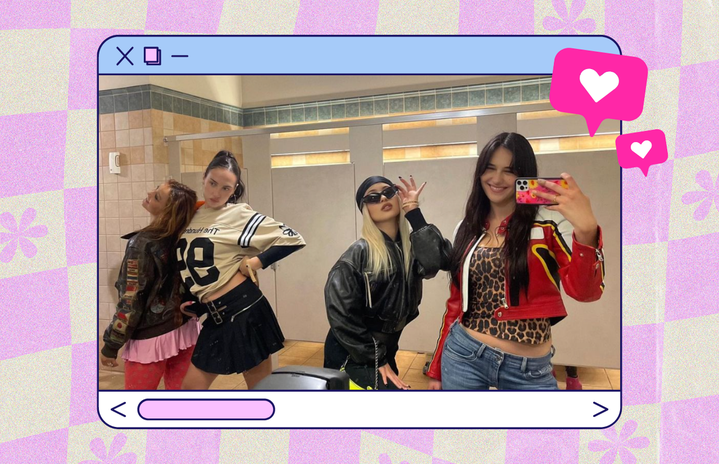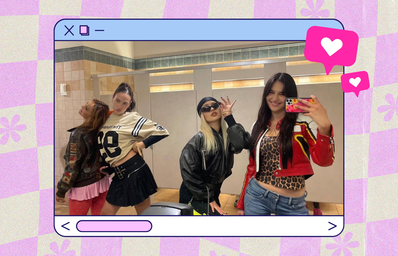“Why does it even matter what I wear?”
But it does. Every time you opt for an eccentric style, bolder make-up and choose to accessorize with chunky jewelry for a more dramatic effect, people never fail to scrutinize you. Sometimes, they may show concern, but more often than not, their gaze is shrouded with judgment. Occasionally, a mixture of horror lurks in their dull brown eyes and a hint of mockery up their bristly nostrils.
No, you can’t dare to wear anything other than tight tops and loose pants. You can’t tuck your shirt in your trousers, nor can you toss your hair with colorful tic-tacs from the store down the street. Most days, you are expected to appear ‘normal’, in crisply ironed shirts and snug skinny jeans. God forbid if you step out of your room wearing chains around your neck, goth rings on your fingers, and platform black boots with a dungaree playsuit, it’s tantamount to social suicide.
In a culture where conformity is valued highly, deviating from the standard might be a terrifying prospect. You find yourself confined to a narrow spectrum of acceptable attire: Kurtas and Salwars, tank tops and leather jackets, but never daring to wear bralettes or tassels. Never daring to paint your nails as a boy. Never daring to take a step forward and trying to wear something unique because you are scared. Because we are all scared to be the subject under scrutiny, judgment and embarrassment. So, we do the next best thing, we convince ourselves that the choice of picking out a skirt tomorrow will be entirely ours. But the pressure to conform to arbitrary standards of fashion looms over us, dictating our wardrobe choices and how we carry ourselves daily.
But why does it matter if our style defies the status quo? Why should the fear of being stereotypically labeled something crude by society deter us from expressing ourselves through clothing? The answer lies in the deeply ingrained stigma surrounding non-conformity in fashion.
In Indian society, where tradition holds considerable sway and authority, anything beyond the established fashion norms is met with disapproval. Avant-garde fashion apparel are concepts that are sometimes written off as foreign and incompatible with our cultural beliefs. As women we can’t show an excessive amount of our skin because then, society labels us as ‘sluts’ and as men, we can’t wear glitter on our faces or stickers down our arms because that’s ‘gay’. As a result, individuals who dare to follow these unexpected tendencies consequently face marginalization.
We have all witnessed Ranveer Singh’s quirky outfits, often passing comments about his masculinity and sexuality. We have made assumptions about his orientation and made judgments on how a man should dress. His flamboyant persona feeds into stereotypes about creative people in the arts being “drama queens” or attention-seekers but is that fair? Is it fair to mock someone’s choices of attire just because they are bright, loud and unpredictable?
Yet, ironically, the same fashion trends that are deemed “queer” or “slutty” in Indian social circles are sometimes considered advanced, state-of-the-art designs in global fashion capitals like New York and Milan. The dichotomy between local norms and global fashion trends highlights the subjective nature of fashion and the arbitrary boundaries we impose upon it.
Without the ground-breaking Le Smoking tuxedo by Yves Saint Laurent, which revolutionized women’s fashion and symbolized female empowerment, or the fearless punk-inspired creations of Vivienne Westwood, the fashion landscape in the world would not have evolved into the influential platform of self-expression it is today. So, when these designers have cleared a path for us outside this socially confined climate of fashion, why are we still not free from the clutches of negative connotations?
As a college student, how often have you looked down upon someone shaming them for how they have dressed because their style does not match with our standards of fashion? We have giggled away mockingly under hidden stairwells, or have openly chosen to insult someone for wearing clothes that are too revealing or inspired by goth aesthetics and rock bands. This raises poignant questions about the nature of fashion and its role in shaping cultural perceptions. Why do certain styles evoke such disparate reactions in different cultural contexts? Are we condemned to adhere to archaic notions of fashion dictated by societal expectations? Or do we dare to challenge the status quo and embrace our individuality unabashedly?
We can still choose to break free from the bonds of conformity and create a society that is more welcoming. Fashion, after all, is more than just about fabric and jewelry. Rather than judge or exclude, we would do well to have more compassion and embrace our diversity. If we open our minds and see beyond stereotypes, we may find beauty and courage even in unconventional forms of style. A welcoming society begins when we respect individual choices, however different from the mainstream.
– Bidisha Dam


